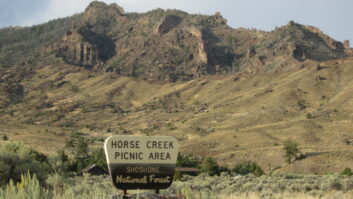Some years ago, the director of engineering for a group was a position that the best and most ambitious broadcast engineers strove for. Once enough experience had been gained and an effective (albeit often �unique�) method for best managing other engineers and working with senior level group management had been learned, a group might promote you from within or seek you out for the role of DOE. Along with the title and role came a certain amount of respect and visibility in the industry as a result of volunteer activities.
�There is some great confusion over titles now, as what was once �chief engineer� has become �vice president� in many stations. While the real wages for the role probably have declined with time, title inflation made two full jumps as the chief engineer position, once below the group director, assumed the title of VP that was once the title above DE. This title inflation created all sorts of new titles like �senior vice president� and �executive vice president.� Maintenance managers became chief engineers, and then there are the more reasonable titles of market chief or cluster chief. Never mind the fact that more than one group believes that even the title engineer itself when used in relation to broadcasting, trains, or buildings is extravagant. Of course reality didn�t change, only the words became useless. My favorite broadcast organization is in a small market and has 30 employees � 16 are VPs of one sort or another.
�What do you put on a r�sum� when applying to a place where title inflation has run its course? Do you say you were the �chief engineer,� as your business card stated? Or �vice president of engineering,� because that is what that newly minted GM understands? The last titles that made any sense were group director of engineering and station chief engineer, so for the purpose of this piece let�s just hold tightly on to �DOE� and �CE.�
�
�Consolidation has rapidly reduced the number of groups and thus the number of group DOEs, first in radio and now in TV. If the group is really big, there might be a layer of regional directors or market DOEs, but the ratio of higher-level engineering management to station level management has steadily decreased. When the industry tries to bring the DOEs together, the group of invites shrinks each year and even fewer have time or energy for industry functions. Odds are a given station will rarely see the DOE and when they do, it�s often a ceremonial fly-by given how thin DOEs are spread. Some groups get the DOE and the CEs together periodically via phone or Web meeting. Still others gather at the spring NAB show, but the NAB convention floor has fewer and fewer call letter badges. Most of the DOEs we�ve grown fond of have retired and/or moved off to their wind down careers or passions.
The traditional DOE was one of the reasons groups had an advantage. He mentored his minions and set the standard of performance. With white glove detail, she (there was at least one female DOE) inspected the stations. It was the DOE who understood and gathered metrics to determine replacement cycles and how to most effectively invest in and apply new technology. The DOE was the CTO.
�But far more important was that the traditional DOE was the career coach. Broadcasting isn�t alone as an industry, but too often we have all but stopped developing and maturing talent in our organizations. Feedback is still the breakfast of champions. A good DOE gives good feedback. A great DOE provides cover when needed. The era of the diminished DOE has great costs.
�The right things only happen when we make the opportunities.
The Wandering Engineer is an industry stalwart who has been in broadcasting since the days of Marconi and Tesla. He gives his thoughts on the current state of broadcast engineering and the broadcast engineer� ��












